The magic of Sophie Wilson’s Crowland Manor

Roula Khalaf, Editor of the FT, selects her favourite stories in this weekly newsletter.
For the artist Sophie Wilson, there’s joy in imperfection. Where some see flaws, she finds fragility and a beguiling beauty. This is as true of her painterly asymmetric ceramics as it is of the inside of her home – a time-worn interior where any remnant of angularity has been softened by close to half a millennia of life. Symmetry is of little interest to Wilson. “There isn’t a single straight line in the whole house,” she says, gesturing to the undulating walls and wonky corridors of the 16th-century home she shares with four of her children.
Acquired six years ago, the Manor House sits in the low-lying Fenland town of Crowland, Lincolnshire, a secluded place that’s notable for its medieval abbey, rare three-way bridge and a glorious absence of gentrification. Though handsome, the simple ashlar-stone exterior of the estate reveals nothing of the faded Georgian grandeur within. It’s only the rear Palladian façade, added in the 1730s, that hints at the Grade II*-listed property’s opulent past life, when its 4,000 acres of farmland stretched all the way to Crowland Abbey and beyond.
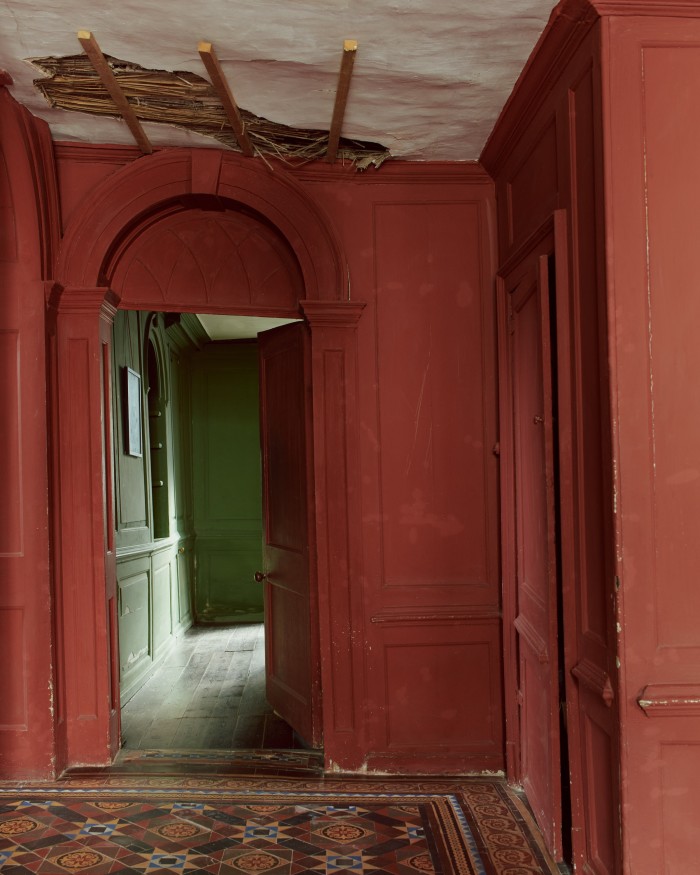

When Wilson first made the two-hour trip to view the house from her former home in east London, having dramatically expanded the boundaries of her search following months of uninspired house tours, she was immediately struck by the layers of life held within its walls. “I had a very real sense of the births and the deaths, and the laughter and the arguments that had happened here,” she says. “I wanted to become a part of that noise, both wonderful and terrible at the same time – nothing else compared.” Fortunately for Wilson, the previous owner was keen to pass the property on to an individual who recognised that preservation does not necessarily equate to perfection. “He wanted someone who understood the house’s surfaces, not someone who would sanitise it and turn it into a boutique hotel,” she says.
Modernisation couldn’t be further from her mind, even though she was faced with some harsh realities when moving in. Most pressingly, the cellar was flooded and needed urgent structural repairs. “The house had essentially been standing in a pool of water for about a hundred years,” she says. The Herculean effort to make the interior structurally sound is still very much in progress. Many of the 23 rooms remain unused, and large swaths of the house are dimly, if rather romantically, lit (electricity is yet to reach the old servants’ quarters on the third floor). A small number of rooms have central heating supplemented by open fires and wood-burning stoves that Wilson feeds throughout the day – a demanding but meditative routine.
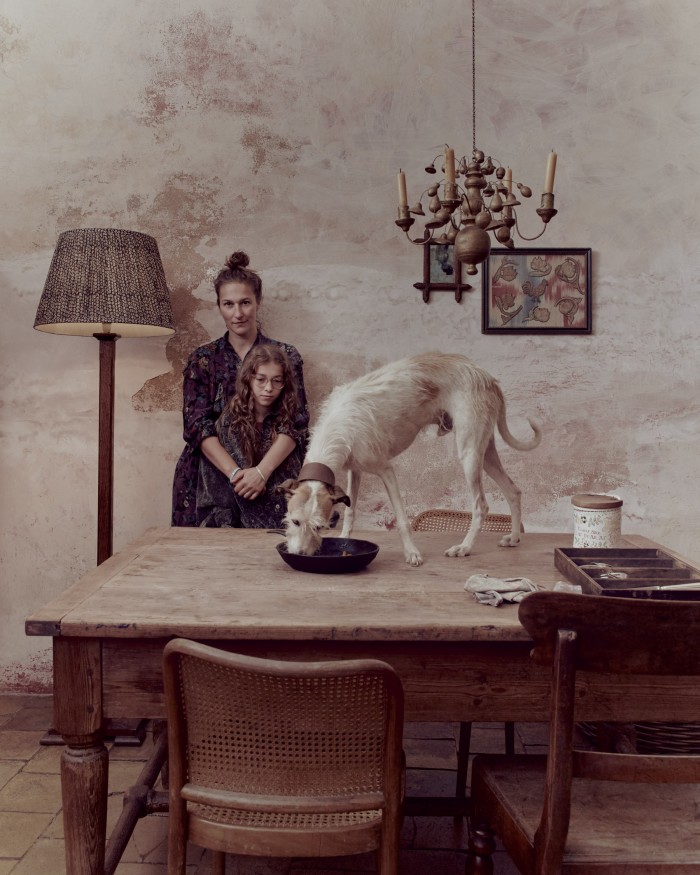
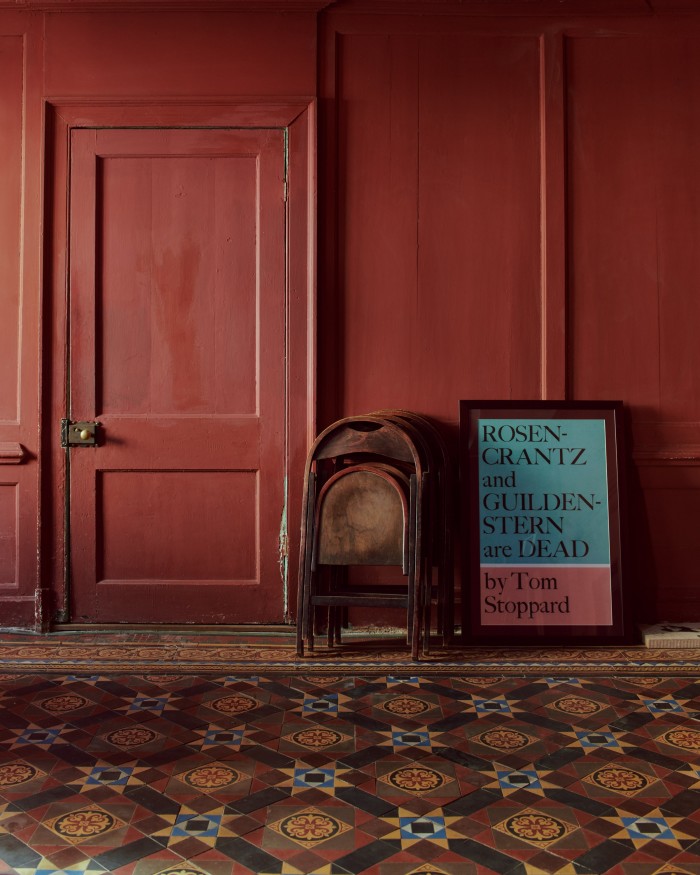
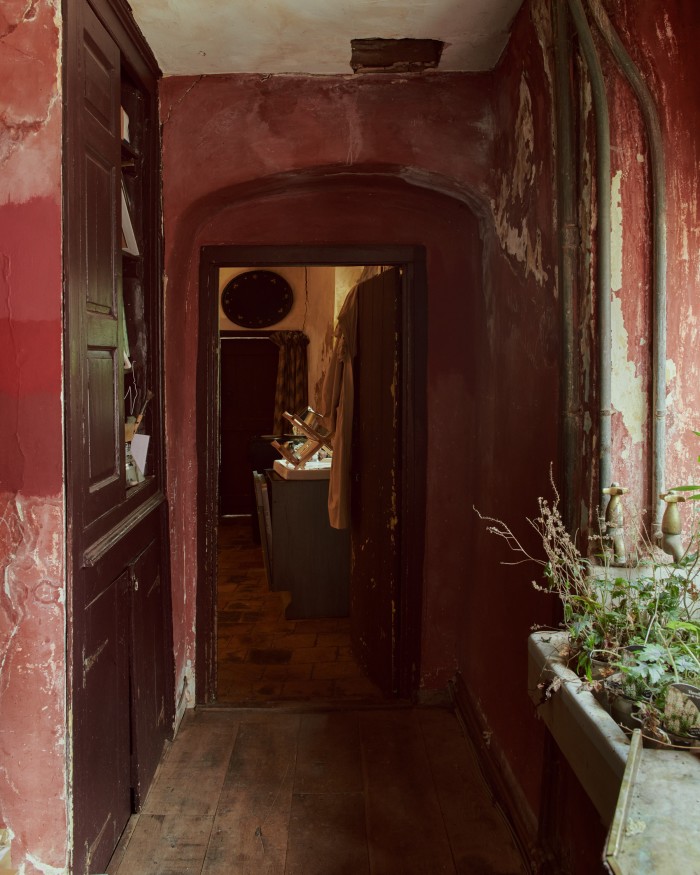
Practicalities aside, it’s this untouched, rather chaotic quality that makes the house so magical. There’s a table-tennis table in the patterned hallway, and a once-majestic ballroom is now a ramshackle store for her antique furniture finds. Some spaces have been utterly abandoned for centuries, which means that everything from the Georgian floor-to-ceiling wood panelling to the bright rows of early Victorian Minton ceramic tiles that line the floors remain wonderfully intact. “There were no hideous bathrooms or kitchens to pull out,” says Wilson of this rare and remarkable sweep of original historical features. “This country is full of period properties but it’s very unusual to find one that hasn’t been interfered with.” With neglect has come conservation, lending the space a dramatic, almost cinematic feel. “It’s like living in a film set,” says Wilson. “Every room is so theatrical.”
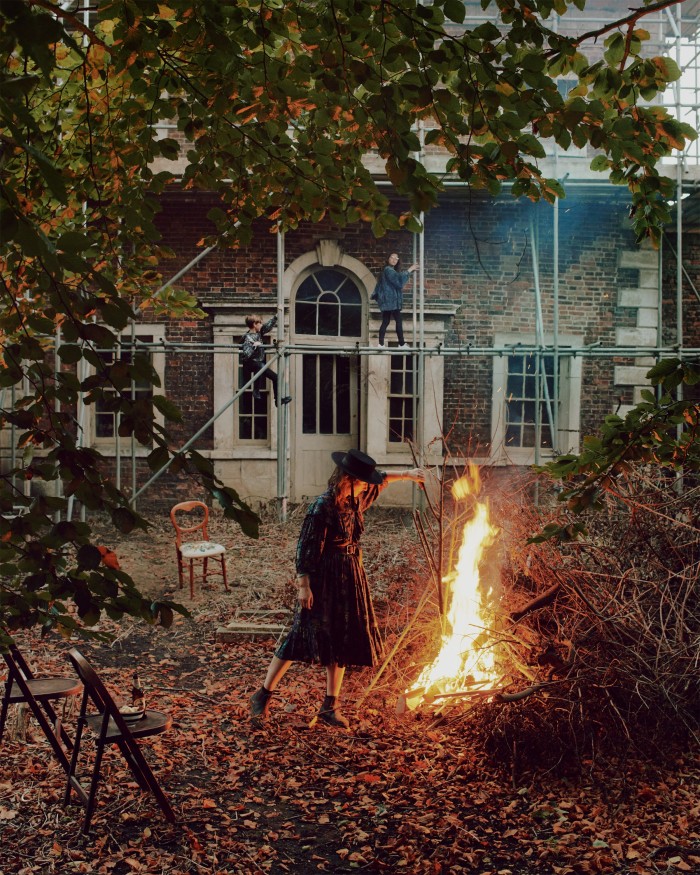
Now Wilson is forging her own role in her home’s rich history. Soon after moving in, and with her youngest son safely installed in school, she began setting up shop in the patterned hallway of the house, selling jams made from foraged fruit, handmade soaps wrapped in marbled papers and, when she failed to find local makers, her own handcrafted ceramics, whose terracotta forms were inspired by the shards of English slipware and pottery she’d found while digging up the tangled forest of garden. (Before training in fine art at Edinburgh, Wilson did ceramics at A-level.) The enterprise became known as 1690, a year that Wilson found inscribed in corners and above doorways throughout the house.
Unsurprisingly, the footfall in this corner of the Fens was minimal, but the shop became a study in branding and a lavish stage set for Wilson’s “handsome, rather than pretty” artisanal wares on social media. As poetic as it is photogenic, her @1690works feed ignited a swift trade, and her now signature white slip and terracotta ceramics have become her main concern. Her first online customer was Charlie Porter, the founder of the antiques and storytelling site TAT. Soon after, the writer Clover Stroud commissioned a plate etched with the words “Love and light to you always, my dear sister” for her sibling, potter Emma Bridgewater.

Typically working with one coat of slip, fired twice, Wilson uses an ancient Roman technique known as sgraffito (meaning “scratched” in Italian) or incision, etching phrases and quotations into the wet white surface to reveal the red tones beneath. It’s a high-stakes method that requires an instinctive feel for the materials. “I have to tend to them as though they’re babies,” says Wilson of the rows of ceramics drying in her kiln in the butler’s pantry.
One of her bestselling plates borrows a line from the British-Indian poet Nikita Gill that reads: “I am more wolf than woman, and I am still learning how to stop apologising for my wild.” It speaks volumes of Wilson’s own fearlessness. For every project she has a dedicated scrapbook filled with visual references that encompass everything from Renaissance inlaid ivory chests to dress patterns to Laura Ashley prints. “It’s about storytelling,” she says of the rigour applied to each brushstroke and lotus-flower motif. What unifies her eclectic vision is the rich colours, which are pulled straight from the deeply saturated limewash-hued walls of her house. “I want every piece to feel at home in this space,” says Wilson. “So I’ve evolved this very personal palette of time-worn tones.”

This summer, Amanda Brooks invited Wilson to take over a space at her Cotswolds store, Cutter Brooks. Wilson conjured a replica of her original homespun shop, which she describes as “the kind of place Molly Weasley would go for her essentials”, and created an entire ceramics series inspired by Chinese Imari ware, putting a 1690 spin on the brightly tinted blue-and-white pottery style. Comprising jugs and plates, these pieces started life as a fluid painting that Wilson made with her children at the dining table in the cosy but chasm-like Middle Kitchen, where the family spends much of their time. “It reminded me of the kinds of vessels you’d see in the background of a Matisse painting,” she says of the artwork, which set her on a mission to replicate its “splashy quickness” in three-dimensional form.


It’s typical of Wilson’s approach, which is nothing short of academic. With every collaboration comes the mastery of a new technique. For the design store 8 Holland Street, she worked in a form resembling famille verte Chinese porcelain from the Qing dynasty-era, creating lamps from 19th-century brush pots with Vietnamese leaf hat-inspired shades. For The New Craftsmen she’s revived the historic salt box. As uneven as the contours of her home, these sturdy, pictorial ceramic containers come complete with English hardwood lids, and inscriptions of the words: “Thou Art As Dear As Salt”.

Wilson finds the challenges unique to each ceramic form utterly compelling. For her next act, she hopes to master the alchemy of oxides and mocha diffusion techniques, mimicking the ancient materials used before the age of ready-made chemicals. The latest iteration of her store, @1690store, has now launched online. “I’m a bit of a one-man band,” she admits. “I always just give things a go – it’s the Yorkshire harridan in me.”
Her longer-term dream is to install a huge glass window looking onto the garden in the Middle Kitchen – aka her operations centre – where she sits and makes her designs. For now, Wilson is happy in the knowledge that her children can enjoy the kind of liberated, analogue life she experienced herself growing up in Scarborough. Besides river swimming and exploring the endless wetland waterways, their current favourite pursuit is fishing. “They still call this ‘the crumbly house’,” she says. “But I think they’re beginning to realise theirs is a rare and beautiful home.”5
Comments